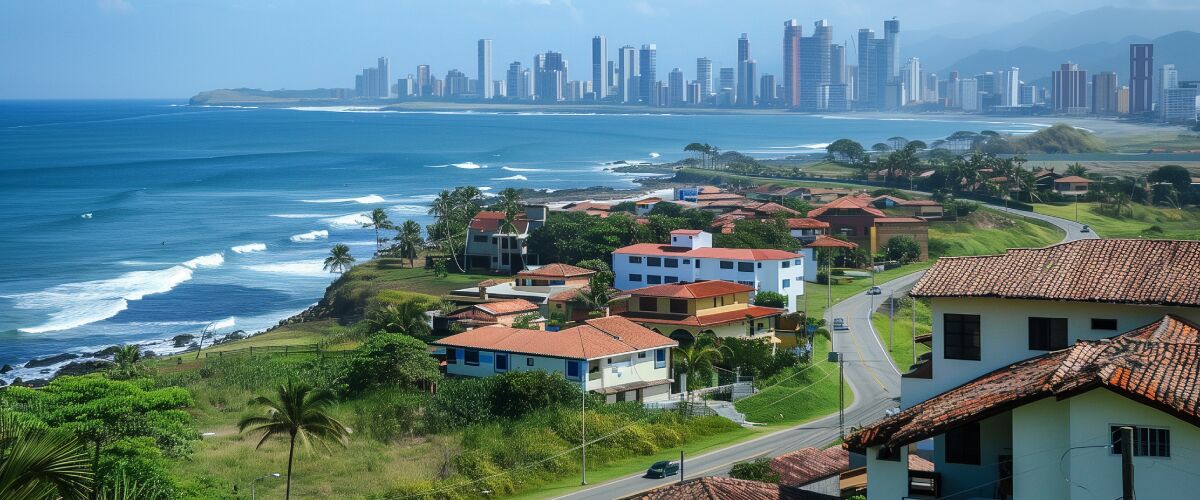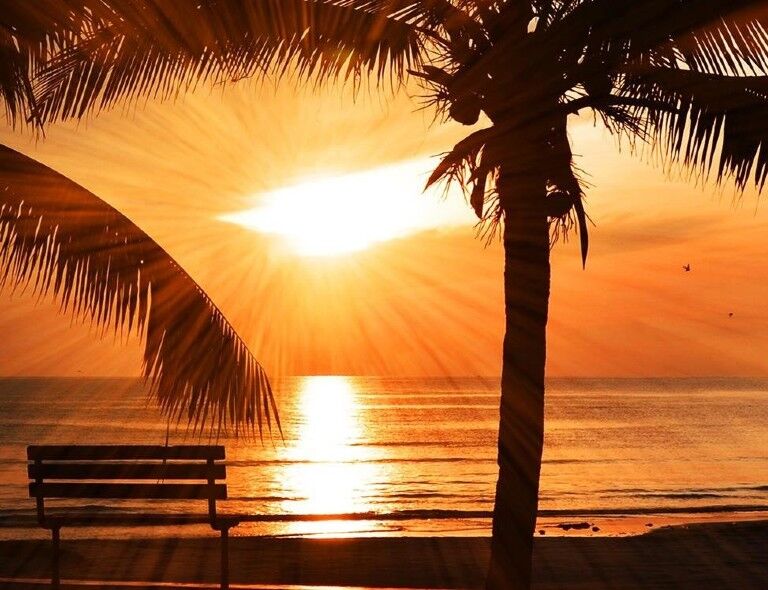In my consulting practice, people often ask about my own “Plan B”. They want to know what I’ll do when the s**t hits the fan (SHTF) in the good ol’ US of A. And, why I chose that plan.
In my case, it’s Panama, where I’m a permanent resident.
How I Chose Panama as My Personal “Bug Out” Location
I went through a comprehensive evaluation of that country versus several other possible alternatives.
Free Wealth Protection Insights
Enter your email below to receive our weekly briefings on better ways to preserve your wealth, legally reduce your tax bill, and better protect what you’ve worked hard to build.
The Nestmann Group does not sell, rent or otherwise share your private details with third parties. Learn more about our privacy policy here.
PLEASE NOTE: This e-series will be delivered to you via email. You should receive your first message minutes after joining us. By signing up for this course, you’ll also start to receive our popular weekly publication, Nestmann’s Notes. If you don’t want to receive that, simply email or click the unsubscribe link found in every message.
Here are the criteria I reviewed:
- Availability of permanent residence. You may have to demonstrate only some minimal level of income in some countries to obtain a residence visa. Others require a guaranteed pension or an investment. You may or may not be required to be physically present in the country for a specific number of days to maintain legal residence there.
- Ability to work or start a business. Most countries don’t make it easy for new residents to work for a local employer. Often there is a separate process to obtain a work permit in addition to a residence permit. Some classifications of residents, such as the pensionado schemes in many Spanish-speaking countries (including Panama), don’t allow you to work at all.
- Freedom vs. security. In some respects, you have the greatest freedom if the police force isn’t that efficient – or if you can buy your way out of a traffic ticket or other interaction with the authorities. But the lack of effective policing will embolden would-be criminals. What’s more, if you can bribe your way out of a problem, so can anyone else. And in many countries, a foreigner will probably lose in any grudge match against a local.
- Cost of living. In many countries, you can live very inexpensively if you’re willing to live as the locals do. But if you expect the same amenities in your adopted country as you have back home, you may pay dearly for them.
- Property rights. Are property rights enforced? This is especially important in real estate transactions. But it also applies to bank or trust accounts and even to your personal property.
- Right to privacy. You may have fewer privacy rights outside the US than within. For instance, many countries require foreigners to register with police within a few days of their arrival.
- Infrastructure. This covers anything from the availability of ATMs to health care. It also includes transportation, utilities, Internet, etc.
- Language. If you choose a second residence in a country where you don’t speak the official language, you’ll have to rely on other expats and anyone who can speak English. If you can shop, order food, ask for directions, and chat in the local language, you’ll find it much easier to live there.
- Attitude toward foreigners. Your nationality, skin color, accent, religion, or any number of other factors can prejudice locals against you. In some countries, foreigners may be targeted for crime.
- Taxation. Most countries tax the global income of anyone who lives there for more than six months per year. However, a few countries tax only local income, exempting income from other countries.
- Availability of citizenship and passport. Will your adopted country award you citizenship and a passport after you’ve lived there a certain number of years?
- Dependence on/vulnerability to the US. This isn’t an easy criterion to assess, but the last thing you want is to choose a bug-out location that has an SHTF crisis at the same time as the US.
Why Panama Fits the Bill
Panama passed most of these tests with flying colors.
A residence visa doesn’t require you to live in Panama. You need to spend only one day per year there to keep your resident status. But if there’s an SHTF moment in the US, I can spend as much time as I want in Panama.
If you are 18 years or older, then the easiest way to get residency is through the Pensionado (pensioner) visa.
- To qualify for this status, individuals need to show a monthly pension or annuity income of at least $1,000.
- For each extra dependent, like a spouse, you need $250 more of pension or annuity income per month. (OR a bank reference from a bank established in Panama showing enough funds to support your dependents—$2,000 per dependent is enough).
- You can also apply under this residency permit if you are receiving a pension between $750-$999 net per month and you have purchased real estate property in your name in Panama, with a value of at least $100,000.
- It’s important to note that being a “retiree” is not a prerequisite for eligibility for this visa. Individuals aged 18 and above can apply as long as they meet the specified income criteria.
I received a “citizens of friendly countries” visa. But the requirements for the Friendly Nation’s visa are now much stricter. So, the Pensionado (pensioner visa) is now the best option.
After five years of legal residence, I can acquire Panamanian citizenship and passport. You must have a physical residence for at least part of this time. You must also show some integration in Panama and speak Spanish.
One Drawback
Panama doesn’t allow dual citizenship, although this prohibition isn’t stringently enforced.
Panama’s financial privacy laws are very strong. But, an increasing number of exceptions apply to investigations by foreign tax authorities, especially the IRS.
Infrastructure wise, Panama isn’t quite up to first-world standards. I would probably buy a backup generator, if the dwelling I lived in didn’t have one already, to deal with the frequent electricity outages. On the other hand, the transportation, medical, and Internet infrastructures are excellent.
Panama’s official language is Spanish. I can get around Panama City, the capital and largest city, without speaking Spanish. But, elsewhere in Panama, few people speak English.
As a middle-aged white male, I’ve never encountered prejudice in Panama. On the contrary, the locals are usually quite solicitous toward me. That may be because Panamanians have been dealing with American visitors for more than a century. It may also be because they associate gringos with money. Or it could be both.
Panama is one of those rare countries with a “territorial” tax system. Generally speaking, that means you pay tax only on income you earn within Panama. That’s not especially helpful for US citizens like me. We are taxed on our worldwide income, wherever it’s generated. However, with the foreign earned income exclusion (FEIE), a US citizen earning income outside the US or Panama can afford a high-quality lifestyle. They can do this while paying little or no income tax. (Note that the FEIE does not apply to dividend or entrepreneurial income or capital gains.)
The FEIE exempts the first $130,000 (for 2025) of your earned income from US tax. This exemption applies if you’re a US citizen or green card holder living and working outside the US. If your spouse accompanies you overseas, you can double this exemption. Together, you can earn up to $260,000 a year (for 2025), without owing US income tax.
A Word About Medical Care
Panama has first-class medical care available at a significantly lower cost than the United States. It has an extensive network of private hospitals staffed by physicians trained in the United States, Canada, and Europe.
The Drawbacks to Living in Panama
Panama does fall short in some areas.
Corruption and crime – including crime aimed at foreigners – are a problem. Police investigations leave much to be desired, unless you have contacts with political “pull.”
I’ve also heard some horror stories from expats about the lack of clear title to property in some parts of the country. This is especially true for so-called “rights of possession” properties. But if you hire a lawyer to guide you through the process and make sure you’re purchasing titled property, you can avoid this issue.
I also gave a lot of thought to how Panama will be affected during an SHTF event in the US. Panama uses the US dollar as its official currency. So, a sudden drop in the dollar’s value would cause high inflation in Panama for anything imported. But Panama could decouple its parallel currency, the balboa, from the dollar if circumstances required it to do so.
The Panama Canal is inextricably linked to the US. However, the US relinquished all rights to it in 1999. But, the US retains the right to act against any aggression or threat directed against the canal. For me, it’s reassuring to know that the world’s most powerful military is ready to defend my adopted country’s most important source of revenue.
Moving to Panama from the US: List of Visa Programs
Dozens of visa options are available to get temporary residency in Panama. But, there are only three ways to get instant permanent residency. They are the pensionado visa, the qualified investor visa, and the automatic forestry investor visa.
- Pensionado (pensioner) visa. To acquire this status, you must show proof of pension or annuity income of $1,000 or more per month. You must show an extra $250 of pension or annuity income per month for each additional dependent on your application, such as your spouse. You don’t need to be a “retiree” to be eligible for this visa. Anyone 18 years or older can apply if they satisfy the income requirements.
- Qualified investor visa. There are several options to qualify, but the most affordable one is making a real estate investment of at least $300,000. The investment must be held in your name or a Panama corporation you own. It must be maintained for at least five years otherwise your residency status will be cancelled.
- Automatic forestry visa. This visa requires an investment of $350,000 or more into an accredited reforestation company. You must hold this investment for a minimum of five years.
If you do NOT qualify for the Pensionado or Qualified Investor visas, several popular temporary residency visas are available:
- Person of means visa. This two-year visa requires that you purchase real estate valued at $300,000 or more in Panama. Or, you can purchase a $300,000 CD at a local bank. Or, you can combine a CD and real estate purchase, so long as the total investment is valued at $300,000 or more. You can file an application for permanent residency 30 days before your temporary permit expires.
-
Full forestry visa. This visa requires an investment of $100,000 or more into an accredited reforestation company. You must hold this investment for at least five years. But, after two years, you can apply for permanent residency.
While Panama does NOT have a citizenship by investment program, it offers several residency options that can lead to citizenship.
Interested in learning more about citizenship by investment programs? Here you’ll find the cheapest citizenship by investment programs. We’ve ranked the most cost-effective programs for singles, couples, and families.
Please Note:
All Panamanian visa applications must be made through a Panamanian lawyer.
Moving to Panama: Summary of Path to Citizenship by Various Methods
It is possible to get citizenship in Panama by the following methods:
- By birth in the territory of Panama.
- By taking up residency in Panama if at least one parent was a Panamanian citizen by birth.
- By taking up residency in Panama before age 18 if at least one parent was a naturalized Panamanian citizen.
- By naturalization after five or more years of legal residency in Panama. This period is reduced to three years for foreigners married to a Panamanian citizen or who have Panamanian children. Citizens of Spain or of Latin American countries are eligible for immediate citizenship after establishing legal residency in Panama.
- By adoption by a Panamanian citizen before reaching the age of seven.
Panama’s passport offers visa-free entry, or entry with minimal visa formalities, to more than 140 countries, including all 27 EU countries. Entry to the United States and Canada, however, requires a visa.
Panama does not permit dual citizenship, but this prohibition is currently not enforced.
Need Some Help?
Schedule a consultation with a Nestmann Associate and let’s see if moving to Panama is right for you. Click here to request a call.













